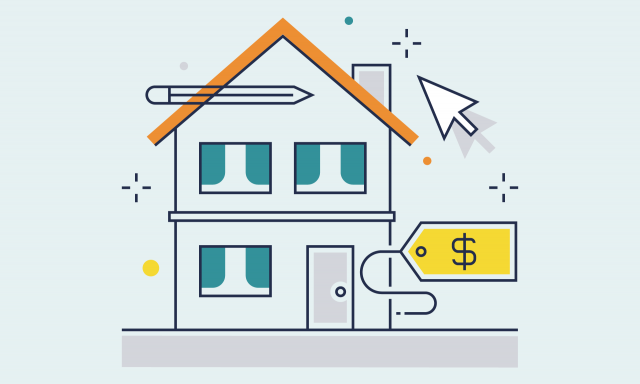

 Article
Article

 What drives household consumption? Standard theories of consumer behavior may not fully account for a major driver of spending (or not spending). Professor Dan Murphy and colleagues have a new model to help us understand consumption choices and the broader effects of policymakers’ attempts to stimulate the economy.
What drives household consumption? Standard theories of consumer behavior may not fully account for a major driver of spending (or not spending). Professor Dan Murphy and colleagues have a new model to help us understand consumption choices and the broader effects of policymakers’ attempts to stimulate the economy.

Insights from
Written by
What determines how much you spend in any given year? Is it:
Standard theories of consumer behavior embody the Permanent Income Hypothesis — the notion that consumption fluctuates primarily in response to changes in (b) expected future income and (c) wealth.
UVA Darden School of Business Professor Daniel Murphy and three colleagues (Jorge Miranda-Pinto, Kieran James Walsh and Eric R. Young, each currently or formerly affiliated with the University of Virginia) present new evidence that a large share of consumption is driven by (d) — unanticipated expenditures that are unrelated to a household’s future income or wealth.
To arrive at this conclusion, Murphy and colleagues examined data on households from one of the most significant data sets available: the Panel Study of Income Dynamics (PSID). Directed by faculty at the University of Michigan, the PSID celebrated its 50th year in 2018. A nationally representative sample of more than 18,000 individuals living in 5,000 families, it’s the longest-running longitudinal household survey in the world.1
In 1999, the PSID began collecting information on consumption in addition to income and wealth information. From these data, Murphy and colleagues observed four facts concerning consumer behavior:
To explain these facts, the authors proposed a model “in which households face time-varying consumption thresholds that, if violated, yield substantial utility costs.” What does that mean? These consumption thresholds represent unanticipated shocks such as medical emergencies and auto repairs. When an adverse shock hits a household, the household chooses to accumulate debt (reduce wealth) rather than let consumption fall below a threshold level. For example, rather than move out of a house or slash food consumption, households simply accumulate debt when faced with a large, unanticipated expenditure.
The authors’ model has implications for policies designed to stimulate the economy. During the past two recessions in the U.S., the government issued tax rebates to households in hopes those households would spend the money. However, Murphy and his co-authors highlight recent other studies documenting that many of the households that policymakers thought were the most likely to spend — those with high debt and low income — did exactly the opposite. In short, many high-debt households use new income to pay down debt rather than spend.
The authors propose a new explanation for this otherwise puzzling observation. In their model, high-debt households are those that recently experienced an adverse shock such as a necessary auto repair, unexpected education expense or a medical bill. These households are “saving-constrained” in the sense that they would have higher saving/lower debt if not for these unanticipated needs. These high-debt households face the possibility that if another adverse shock hits, they won’t be able to afford it or borrow enough to pay for it and would therefore have to forgo necessary medical care or other essential expenditures. Therefore, these households choose to use all additional income to repay their debt as a precaution against future adverse events.
If finances are tight on a regular basis, it makes intuitive sense that your first instinct upon receiving a sudden influx of cash isn’t to buy some designer furniture or take the family to Disney World. Paying off the new radiator for your car that you charged to the credit card last month is the wiser course of action — after all, you don’t know when such flexible funds will be available again or when the next financial disaster might hit.
Murphy and his co-authors suggest that their model not only helps us understand households’ consumption choices, but that it is also important for understanding broader effects of policymakers’ attempts to stimulate the economy. In their companion paper, the authors demonstrate the relevance of their theory for understanding the effect of fiscal stimuli on credit markets.
It’s to that macro effect — on interest rates and credit markets in particular — that we’ll turn to in “The Real Effect of Fiscal Stimulus: Inequality, Interest Rates and Beyond.”
Daniel Murphy co-authored “A Model of Expenditure Shocks” with Jorge Miranda-Pinto of the University of Queensland, Kieran James Walsh of the University of California, Santa Barbara, and Eric R. Young of the University of Virginia.
An expert in economics and public policy, Murphy researches the nature of consumer demand and its implications for market outcomes. His work addresses international issues and macroeconomics, including the determinants of cross-country price differences, the causes of fluctuations in the price of crude oil and the consequences of asymmetric economic growth.
Prior to joining Darden’s Global Economies and Markets area in 2013, Murphy was a National Hunger Fellow and research associate at the Urban Institute.
B.S., University of Notre Dame; M.A., Ph.D., University of Michigan